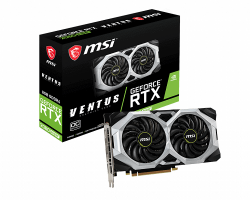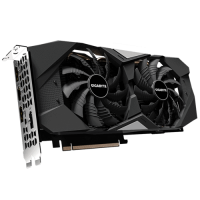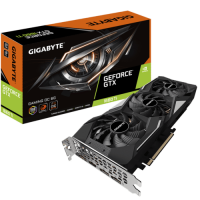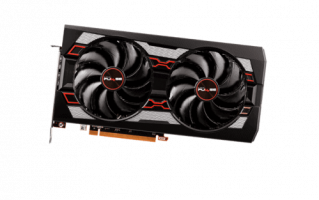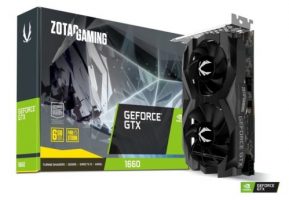Best Graphics Card for 1080p 144Hz in 2021
Five Fantastic Graphics Card Pairings for a 1080p 144Hz Monitor
- Last Updated May 13, 2021
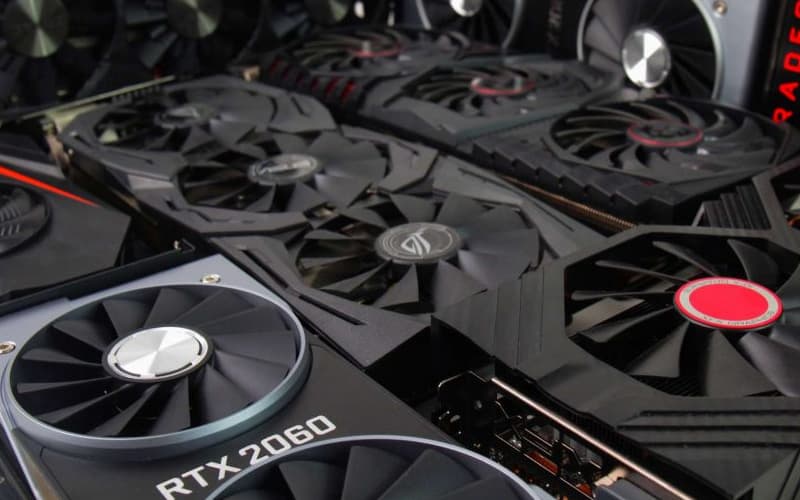
Even if you can technically afford it, buying a graphics card isn’t always as simple as picking out the latest and greatest. You have to consider the parameters of your other equipment, your monitor included. There’s no point fixing up a 1080p 144Hz monitor with an RTX 3090 because the monitor simply won’t be able to keep up with the GPU, and wasted frames mean wasted money. If the GPU is severely overpowered, it may even result in screen tearing.
So, if you’ve treated yourself to a 1080p 144Hz monitor, and you’re looking to pair it with a GPU that pushes it to, rather than exceeds its limits, you’re in the right place. We’re going to guide you through this trying consumer process with reviews of five of the best graphics cards for gaming on 1080p 144Hz monitors you can currently buy. Let’s get started!
Products at a Glance
How We Picked
The graphics card industry can feel like more of an arms race than market competition sometimes, making it a formidable prospect to engage with, especially if you’re new to PC gaming, but here at PCGuide, we’re veterans of the GPU conflict.
We know graphics cards like the back of our hands, better even! We’re engaging with new and not-so-new products day in and day out, not just so we can share all the best products with you, but because we want the best gear for our own gaming setups as well. We believe that if a GPU isn’t good enough for us, it’s not nearly good enough for you either.
For gaming on 1080p 144Hz monitors, we’re looking for GPUs that arrive at an intersection of power and reliability, that can push out some serious fps averages across a wide gamut of games.
Best Graphics Card for 1080p 144Hz in 2021
8GB GDDR6 memory
1665 MHz boost clock
14 GHz memory speed
NVIDIA GeForce RTX 2060 Super chipset
Nvidia RTX 2060 Super GPU
Hardware ray tracing
Advanced DLSS via Tensor cores
Great thermals with expansive headroom for manual OC
It’s not cheap
The MSI Ventus features the fantastic Nvidia RTX 2060 Super GPU, an augmented version of the entry-level 20-Series 2060 GPU. With 8GB of GDDR6 VRAM memory, 2176 CUDA cores, hardware ray tracing, and advanced DLSS, this is one of the highest performing GPUs you can buy for gaming in 1080p with 144Hz refresh rates. It runs cool, pumps out some serious frames per second, and as a bonus, if you ever feel the urge to upgrade your monitor, it provides great performance in 1440p resolutions too.
Nvidia’s RTX 2060 Super is a fantastic chipset for gaming in 1080p resolutions. It has tons of shading potential via the 2176 cores, features 34 RT cores for some pristine hardware ray tracing in games that support it, and has 8GB of GDDR6 VRAM to keep gaming buttery smooth at all times.
Left to its own devices the Ventus will push out between 100-280fps, but with Nvidia’s G-Sync technology, even when the Ventus is racing ahead of your 144Hz monitor, an automatic slowing function helps it keep frame rate rhythm with your display. Perfect!
The MSI Ventus is an axial open-air graphics card featuring a premium dual-fan design and 6mm direct contact copper heat pipes, so as long as your case fan curve is optimized, it’ll rarely ever breach 70°C or 75dBA.
Being that this is a pre-overclocked card, it has great thermals and power limits. Taking things even further with your own manual OC means you’ll even be able to play newer GPU-heavy games such as Assassin’s Creed: Valhalla and RDRII in a silky and immersive manner.
Integrated with 6GB GDDR6 192-bit memory interface
100mm unique blade fans
Core Clock: 1770 MHz
Protection back plate
Direct contact copper composite heat pipes
Tri-fan cooling system
Pre-overclocked
1830MHz core clock speed
A little noisier than most
Still quite pricey
As you can tell from the name, the Gigabyte RTX 2060 Windforce Gaming graphics card is all about keeping temperatures at an absolute minimum, providing the perfect platform for some intensive manual overclocks and supreme performance. With the RTX 2060 chipset at its heart, loaded with RT cores, Tensor cores, and variable-rate shading functionality, this graphics card is ready to give your 1080p gaming the precision boost it needs.
If you’re looking for a card that’s both suitable for gaming on a 1080p 1444Hz monitor and offers the best thermal solution in the business, the Gigabyte 2060 Windforce is absolutely the card for you.
Featuring three alternatively spinning 80mm fans and 4 composite copper heat pipes that actually touch the GPU die, this card is designed to be pushed to the limit. The tri-fan system is a little noisier than most other dual-fan or blower type cards, but it’s a decent trade-off for higher performance.
Arriving out the box with a core clock speed of 1830MHz, this is another pre-overclocked card which means it’s already boosted beyond factory settings. Consequently, putting your hand to some manual overclocking can boost it to an even further degree.
The life and soul of this Gigabyte card is Nvidia’s RTX 2060 chipset, which isn’t quite as good as the Super but still fully classifies as a great choice for some 1080p excellence.
This Gigabyte card generally lives in the 100-150fps zone, ideal for 144Hz refresh rates, especially as it doesn’t feature integrated GPU syncing. More demanding games will bring its averages down, but it rarely ever falls below the 60fps threshold, and thanks to that 6GB GDDR6 memory configuration, picture quality is consistently smooth and even.
Integrated with 6GB GDDR6 192-bit memory interface
RGB Fusion 2.0 – synchronize with other AORUS devices
1860 MHz (Reference card is 1770 MHz)
Protection back plate
Alternate spinning dual-fan cooling
Capable of hitting beyond 160fps before OC
Turing architecture GTX 1660 Ti chipset
6GB GDDR6 VRAM
No special Turing microarchitecture features
Featuring the same alternate spinning Windforce fans – albeit only two this time – as the RTX 2060 Gigabyte card, this 1660 Ti Gigabyte unit keeps things cool and exceptionally quiet. Being a particularly small card, it won’t just appeal to the OC enthusiasts, but the minimalists too. With an Nvidia GTX 1660 Ti running the show, this card is capable of some premium gaming performance. Granted it doesn’t have the special features you’ll find in RTX Turing cards, but it covers the essentials incredibly well. By and large, this is the best card you can buy for less than $700 and a fantastic fit for gaming with 1080p 144Hz screens.
Being a Windforce model, this card’s thermals are on point thanks to Gigabyte’s proprietary alternate spinning fan cooling system. What does alternate spinning do? Well, alternating fan speeds actually reduces air turbulence within the shroud, so rather than becoming stuck in the blustery crosswinds, air can pass quickly over the heat sinks and away from the GPU.
This card is capable of pushing around 40fps during challenging games such as RDRII, right through to averages beyond 160fps for such titles as Wolfenstein II: The New Colossus, but that’s only with pre-overclocked stock settings. Engaging in some custom OC-ing will boost those rates to RTX 2060 levels.
Loaded with the cream of the 16-Series crop, the 1660 Ti, this card is almost exclusively designed for knockout gaming performances in 1080p. It doesn’t contain RT or Tensor cores like its distant cousins in the RTX series, but it still features Turing’s advanced core performance via separate data paths executing instructions concurrently and GDDR6 VRAM.
One of the best things about the 16-Series is their form factor. Considering their raw power, the fact that they’re half the length of most GTX 10-Series and RTX-series cards is nothing short of amazing. If you’re looking for something that will fit nicely into a micro tower, this is the card for you.
Up to 1925 MHz boost clock
8GB 256bit GDDR6
14 GHz memory speed
4096×2160@60Hz resolution
Great cooling system
150fps average in 1080p suits 144Hz refresh rates to tee
Slightly more headroom for overclocking than other AMD cards
6GB GDDR6 VRAM
Not the best for overclocking
For a GPU with such a small process size (7-nm), the Ryzen 5700 XT requires a lot of cooling, and Sapphire has done a great job of coming up with a system that reduces temperatures without increasing volume.
Packed into the axial shroud is a Dual-X cooling system including two huge fans with 95mm blades capable of dissipating a massive amount of heat from the sink at reasonably low rpm.
The Ryzen RX 7500 XT is built using AMD’s RDNA architecture featuring redesigned SMs, efficient IPCs, GDDR6 memory, 2560 cores, 160 texture units, and 64 render units. As this is a pre-overclocked model, its base and boost clocks have been shifted from 1605MHz and 1905MHz to 1670MHz and 1925MHz, allowing it to achieve 1080p averages of around 125fps.
AMD cards are famously bad for overclocking, which AMD argues is because their GPUs are always running close to capacity even in stock settings, but this 5700 XT Sapphire iteration does, thanks in part to those pristine thermals, allow you to be a little bit more adventurous with your OC-ing.
6GB GDDR5 video memory
Dual Fan
8 Gbps memory clock
1785 MHz engine clock boost
Super compact. Fits 99% of systems
Turing architecture GTX 1660
Very cool axial twin-fan thermals
Reasonable price
A little underpowered compared to some higher up the list
No special Turing features
If form factor is important to you, this 8-inch Zotac GTX 1660 graphics card should really hit the spot, and generally speaking, a smaller card means a smaller fan system which in turn leads to a quieter performance overall.
It’s a twin-fan axial card, so some of its warm refuse air will be vented into your case, but as long as you tweak your fan curve and protect your other peripherals, it shouldn’t be a problem.
The 1660 is another product of Nvidia’s fantastic Turing architecture. Unfortunately, it doesn’t contain any RT or Tensor cores which means no hardware ray tracing or hyper-fast AI deep learning, but that’s as much a strength as it is a weakness. It ensures your money goes towards standard performance rather than niche special functions.
The GTX 1660 is more of a middle-range GPU in the 16-Series family, so you may have to lower your settings a little if you want to crank the frame rates and make the most of that 144Hz refresh rate. Alternatively, Zotac has completely reimagined their Firestorm software. Made to be as intuitive and clear as possible, tweaking parameters to maximize performance couldn’t be easier.
Things To Consider
Our Verdict
8GB GDDR6 memory
1665 MHz boost clock
14 GHz memory speed
NVIDIA GeForce RTX 2060 Super chipset
It’s our opinion that the best graphics card for gaming on an 1080p 144Hz monitor is one that consistently averages in the 144 frames per second zone and features integrated sync technology to prevent it from ever overpowering your monitor and causing screen tears. As the MSI 2060 Super Ventus meets both criteria, it’s our number one choice, but hey, if that’s a little rich for your blood, don’t sweat it. The Gigabyte 1660 Ti, Sapphire Pulse, and Zotac cards all make awesome 1080p 144Hz pairings, and you can snatch them up for a fraction of the cost.
The Gigabyte RTX 2060 Windforce, with that specialized tri-fan system, is definitely leading the pack in terms of thermals; however, if three fans sound too noisy for your tastes, why not try Zotac’s 1660 diminutive dynamo. It’s quiet, it’s cool, and it’ll fit nicely into pretty much any size case. If they all sound great, but you’re a staunch AMD supporter, the Sapphire RX 5700 XT Pulse is an awesome alternative to Nvidia tech, and thanks to Sapphire’s expert tinkering, you won’t have to worry about any of the deficiencies that tarnished its original release.

